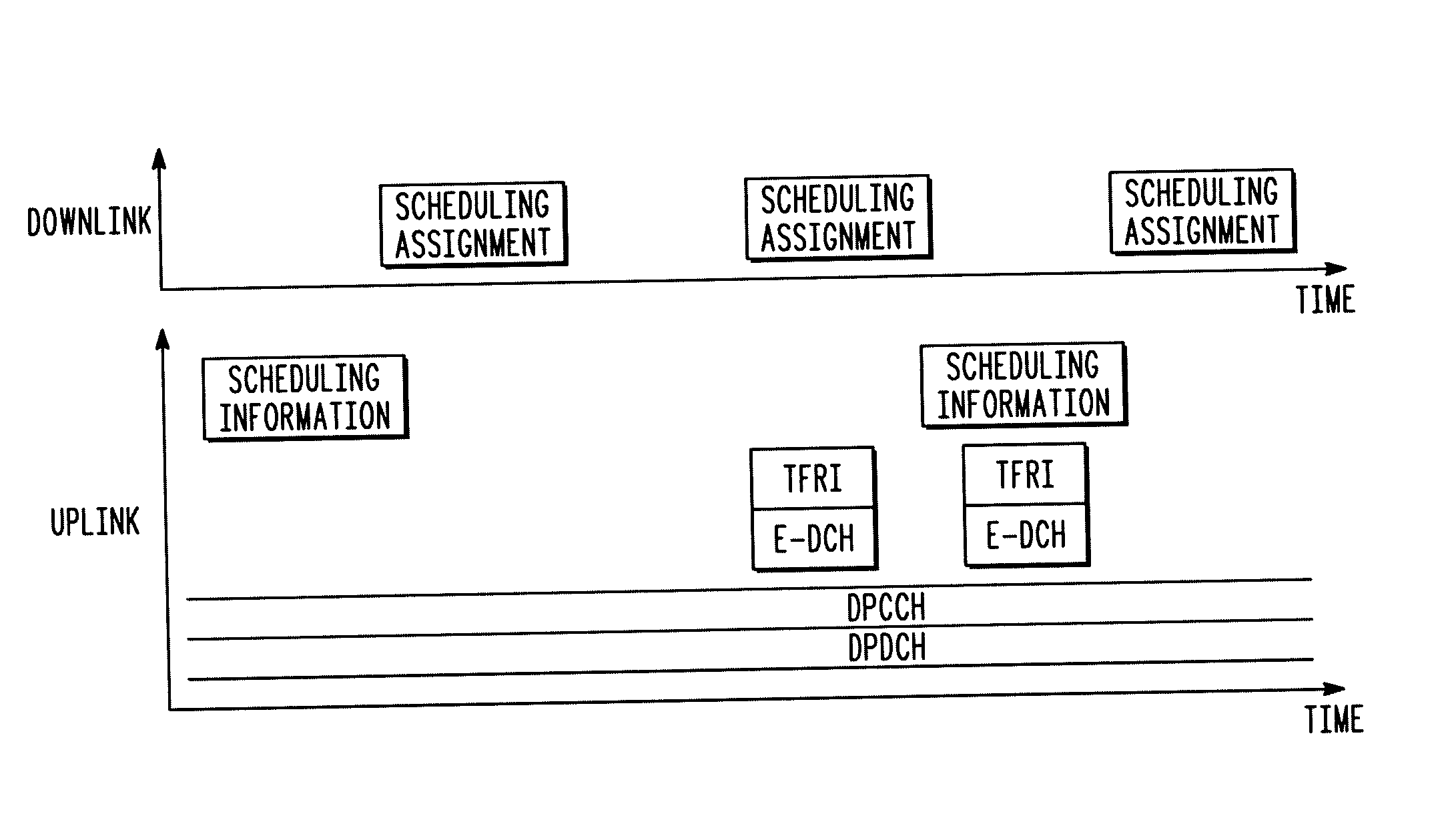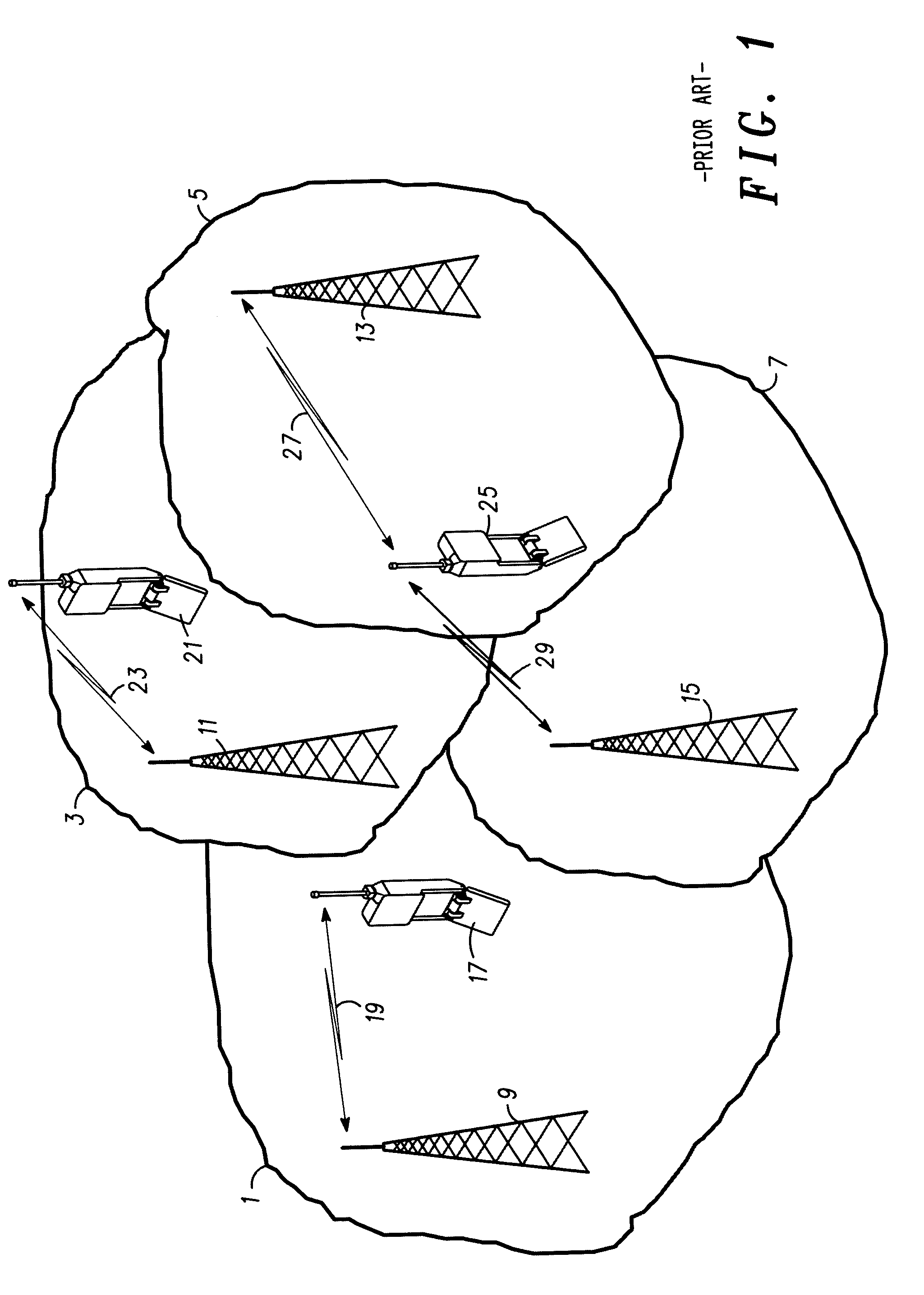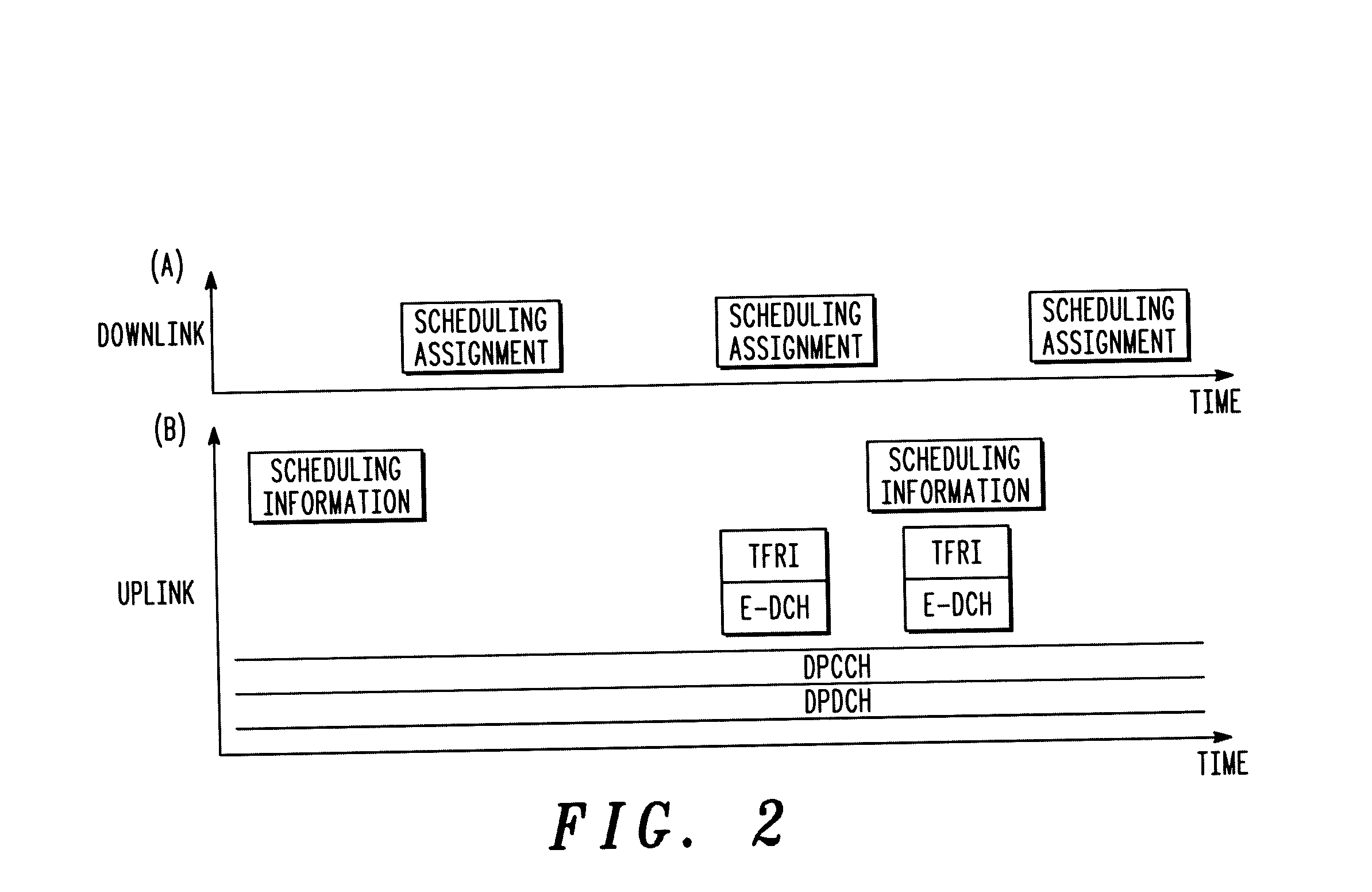Management of uplink scheduling modes in a wireless communication system
a wireless communication system and scheduling mode technology, applied in wireless communication services, wireless commuication services, electrical equipment, etc., can solve the problems of high data rate users in soft handoff using autonomous scheduling, reducing signaling overhead, and increasing the cost of explicit scheduling of l1 uplink and downlink signaling requirements
- Summary
- Abstract
- Description
- Claims
- Application Information
AI Technical Summary
Benefits of technology
Problems solved by technology
Method used
Image
Examples
Embodiment Construction
[0040] The present invention is concerned with the scheduling of uplink transmissions in a wireless communication system, and in particular with the management of transitions between an autonomous scheduling mode and an explicit scheduling mode for uplink transmissions from a wireless communication device to a base station in a wireless communication system.
[0041] Although the present invention is described with reference to a WCDMA system compatible with 3GPP specifications, it should be understood that the invention is not limited to such systems, but instead can be applied to uplink communications in other CDMA and TDMA wireless communication systems.
[0042] Thus in the following description the term "UE" is intended to refer to any suitable wireless communication device, the term "node B" is intended to refer to any base transceiver station, and the term "RNC" is intended to refer to any radio network controller, such as a base station controller. In addition, control signals and...
PUM
 Login to View More
Login to View More Abstract
Description
Claims
Application Information
 Login to View More
Login to View More - R&D
- Intellectual Property
- Life Sciences
- Materials
- Tech Scout
- Unparalleled Data Quality
- Higher Quality Content
- 60% Fewer Hallucinations
Browse by: Latest US Patents, China's latest patents, Technical Efficacy Thesaurus, Application Domain, Technology Topic, Popular Technical Reports.
© 2025 PatSnap. All rights reserved.Legal|Privacy policy|Modern Slavery Act Transparency Statement|Sitemap|About US| Contact US: help@patsnap.com



